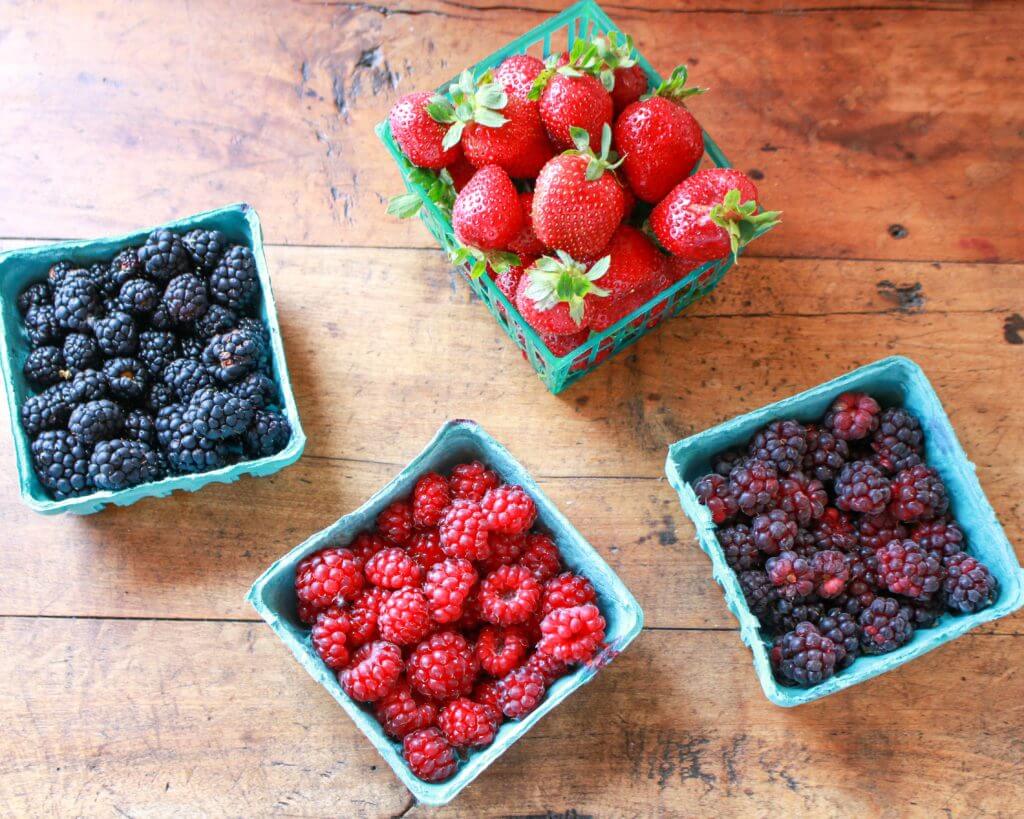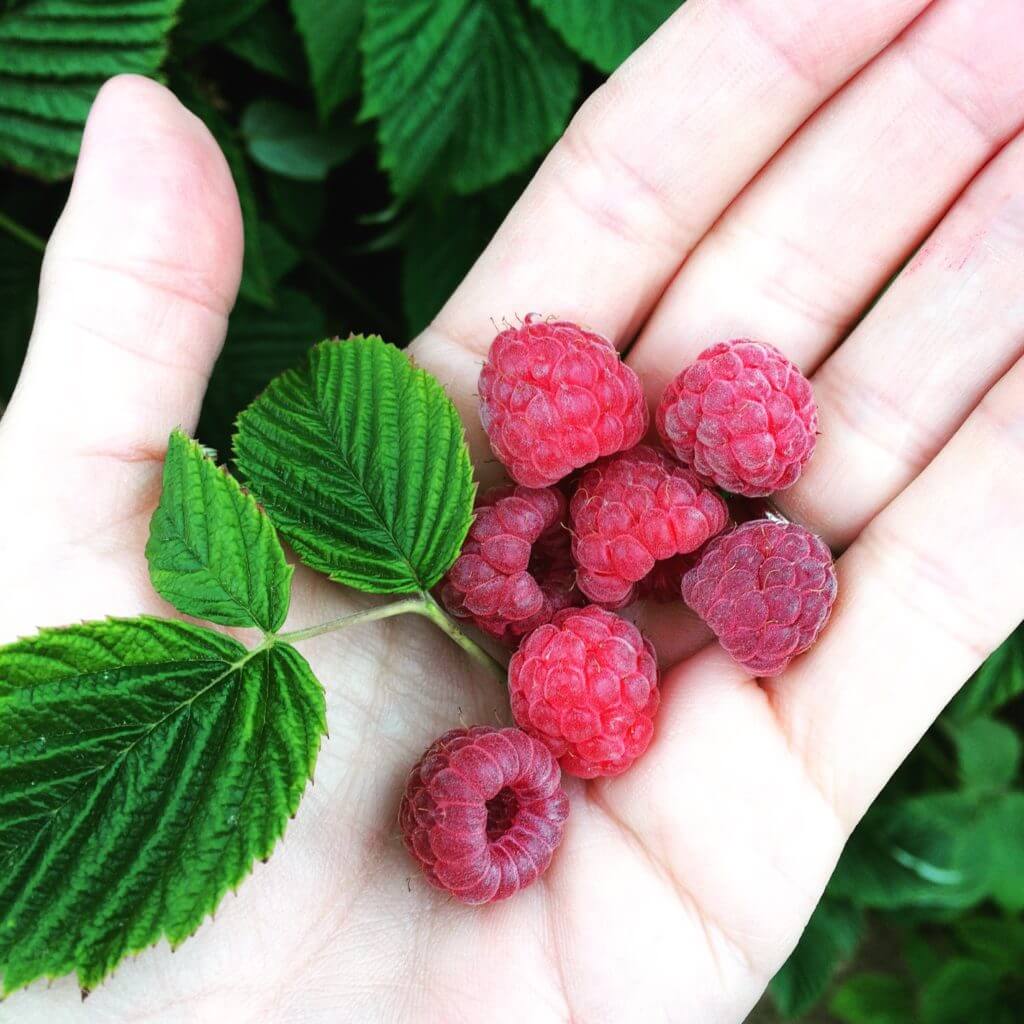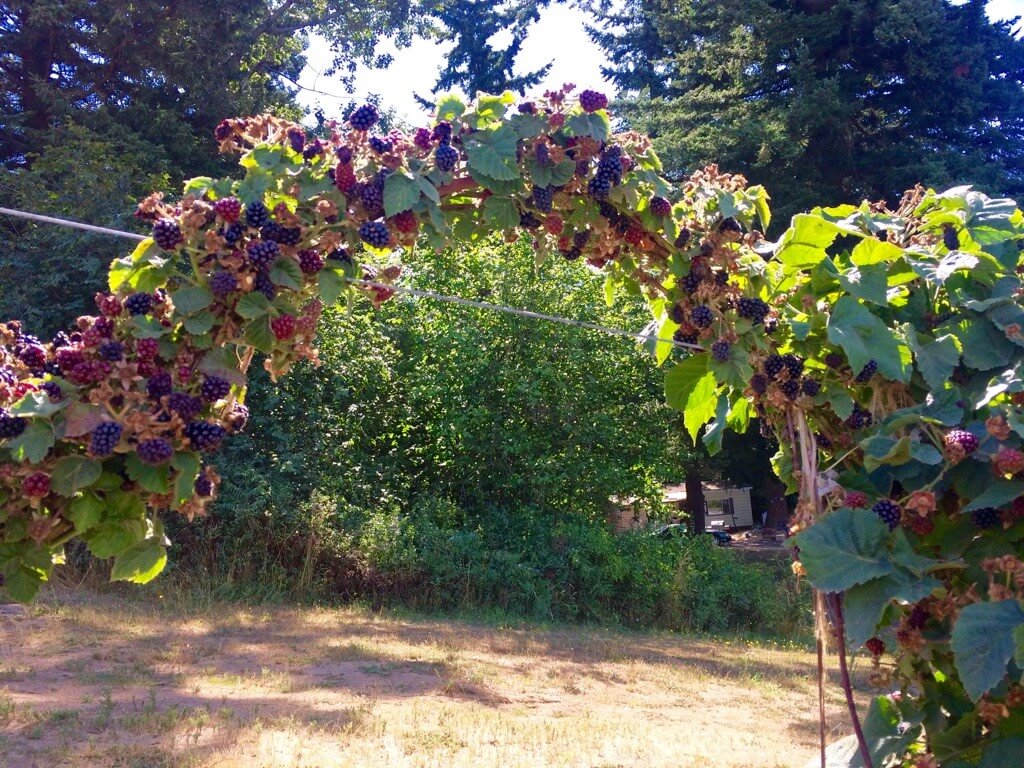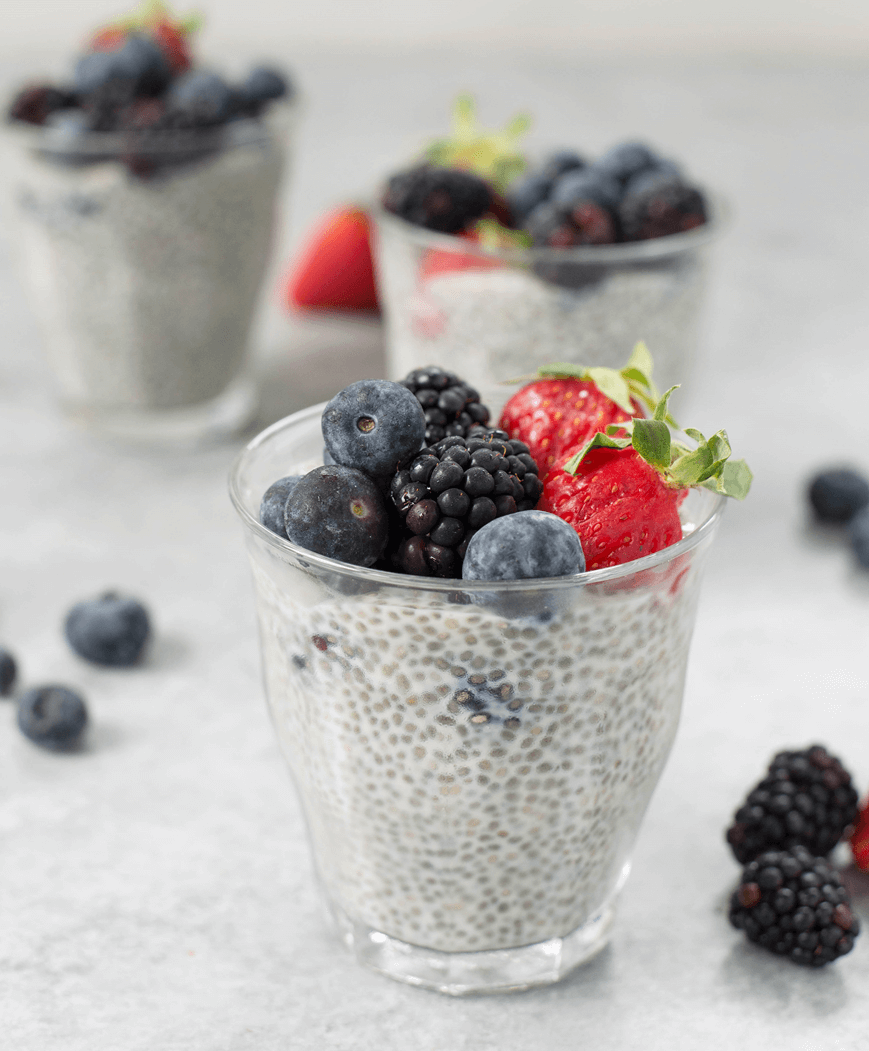Fall in Love with Summer Berries!

Learn more about the summer berries, raspberries and boysenberries, from health benefits to how they grow and ways you can enjoy them in the kitchen.
Ah, sweet, sweet summer berries. Is there anything that can compare to the aroma and taste of berries, warmed by the sun and picked ripe off the vine? Indeed, nature reserved her best for berries, which grow both wild and on farms across the country during the warm summer months. These fruits, produced from the ovary of a flower, have important roles in the health of wildlife, as well as people. Just think that bears load up on berries before hibernation, and birds do the same before migration—both physically grueling endeavors. So, it’s no wonder that humans, dating back to prehistoric times, have understood the significance of berries for health, as well as taste. For example, Native Americans collected and dried berries, using them in many important dishes and for relief from illnesses. They were on to something, as these jewel-like berries are brimming with phytochemicals, which are responsible for their brilliant colors and health potential. While summer is really the time to go wild for berries, you can enjoy them year-round frozen and dried. I’m sharing two favorite summer berries: raspberries and boysenberries.
Raspberries

Description:
Delicate, sweet red raspberries are one of our favorite berries, and they’ve been used by people as traditional health treatments throughout history. Named from the Latin word raspise, which means sweet rose-colored wine, raspberries originated in North Asia and Eastern Europe, but can grow in many places across the world; they especially love the growing conditions of the Pacific Northwest. Each raspberry (or blackberry, for that matter) is a marvelous collection of mini-fruits, each containing a single seed. They both grow on canes, which bear white-pink flowers which can self-pollinate, but get a helping hand from bees.

Nutrition & Health:
Raspberries are packed with nutrition for a skinny little calorie load—only 64 calories per 1-cup serving. Those seeds and skins boost the fiber content to 8 grams per serving—one of the highest sources of fiber in the fruit world. In addition, they provide omega-3 fatty acids (155 mg), vitamin C (54% DV), vitamin K (12% DV), and manganese (41% DV), and some contributions of folate, vitamin E, iron, calcium, magnesium, potassium, and copper. However, it’s those phytochemicals—anthocyanins, ellagic acid, quercetin, and catechins—in raspberries that have scientists intrigued. In combination with the vitamin C in raspberries, the antioxidant and anti-inflammatory profile is impressive. While there are many potential health benefits for eating raspberries, in particular they are really good for your heart in many ways. Eating raspberries can reduce chronic inflammation and oxidative stress, blood cholesterol levels, and blood pressure, and improve the health of blood vessels, and blood glucose levels.

How to Eat Them:
Raspberries are best enjoyed plain and simple—just pop them in your mouth as a fresh, seasonal fruit. However, they are also delicious over breakfast porridge bowls, baked in bars and cobblers, tossed into bright veggie salads, and served as an accompaniment for savory dishes. Try this raspberry salsa with tortilla chips or savory dishes for a new twist.
Boysenberries

Description:
A cross between raspberries, blackberries and dewberries, the boysenberry has an intriguing history, which dates back to Walter Knott (yes, of Knotts Berry Farm fame), who first commercially cultivated the large, reddish-purple berry, selling them at his California farm stand in 1932 and later making them into preserves that literally put him on the map. Classified under the blackberry family, boysenberries have soft skins and a tart-sweet flavor.
Nutrition & Health:
With only 66 calories per 1 cup serving, blackberries (which include boysenberries) are also packed with fiber at 8 grams per serving, as well as omega-3 fatty acids (135 mg), vitamin C (50% DV), vitamin K (36% DV), copper (12% DV), and manganese (47% DV). In addition, they have appreciable levels of vitamins A and E, folate, calcium, iron, magnesium, potassium, and zinc. Boysenberries are also potent in phytochemicals—namely anthocyanins, gallic acid, rutin, and ellagic acid. In fact, scientists call the blackberry family “the king of berries” because of their high levels of antioxidant compounds linked with their deep purple color. While boysenberries are certainly good for your heart, researchers are particularly intrigued about their potential cancer-fighting ability, as laboratory studies have shown berries in the blackberry family may slow or reverse the growth of certain types of cancers, including esophageal, colon, and breast.

How to Eat Them:
The dark purple-ruby rich color and flavor of boysenberries makes them a unique helper in the kitchen. Of course, they make beautiful classic pies and crisps and are delicious over pancakes or cereals, they are also great in sauces to accompany savory dishes, such as grain dishes. Boysenberries offer sweet flavor to kale or spinach salads and a blast of deep color to smoothies.
For more berry recipes, check out some of my favorites:
Lavender Blueberry Granola
Strawberry Coconut Almond Coffee Cake
Super Acai Berry Bowl
Blueberry Millet Muffins


